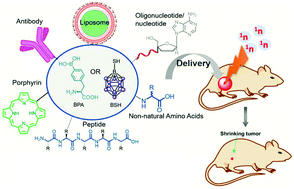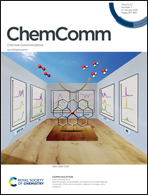A periodic development of BPA and BSH based derivatives in boron neutron capture therapy (BNCT)
Abstract
Boron neutron capture therapy (BNCT) is a particular type of radiotherapy that requires a selective and high concentration of boron accumulation in neoplastic cells. To distinguish the distribution of boron compounds between tumour and normal cells, multiple research groups have been involved and successively innovated a wide variety of boron-based compounds. Despite the development of numerous boron compounds, only boronophenylalanine (BPA) and sodium mercaptoundecahydro-closo-dodecaborate (BSH) have emerged as effective in clinical trials. Here, we highlight the detailed progress in the molecular design of BPA and BSH derivatives from the historical perspective to the latest advances in light of the widely accepted performance required for effective BNCT. In this report, we have provided an overview of a variety of derivatives of BPA and BSH, including amino acids, peptides, polymers, monoclonal antibodies and chelated complexes, and it is observed that such derivatives of BPA and BSH are judicious choices for BNCT. Finally, we have summarised the critical issues for BPA and BSH that must be addressed if BNCT is to become a more widely accepted clinical modality.



 Please wait while we load your content...
Please wait while we load your content...